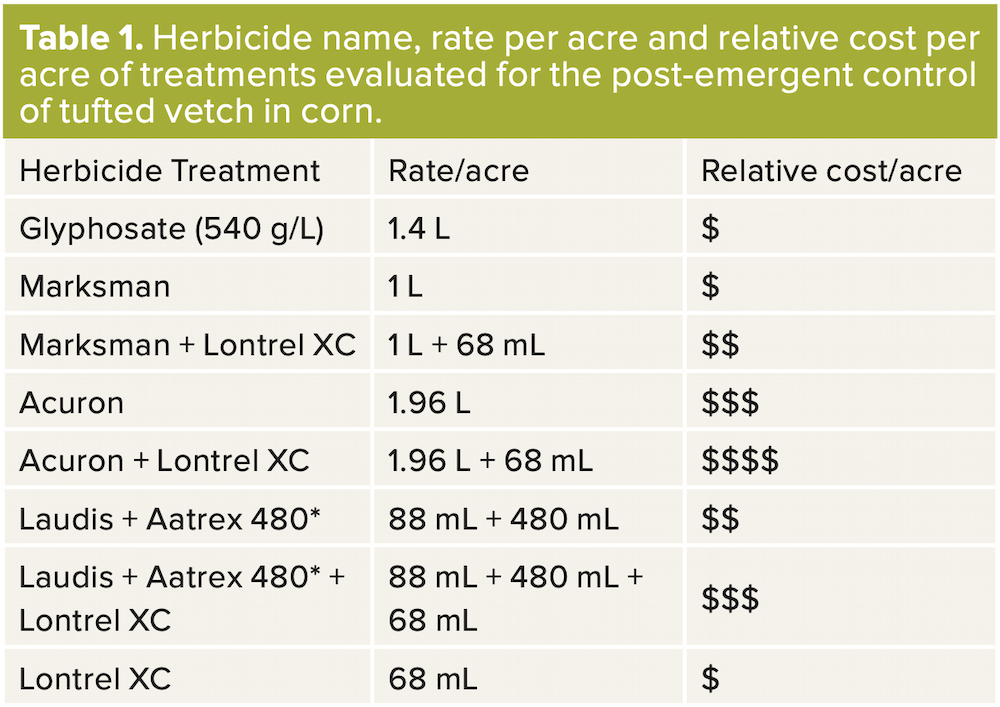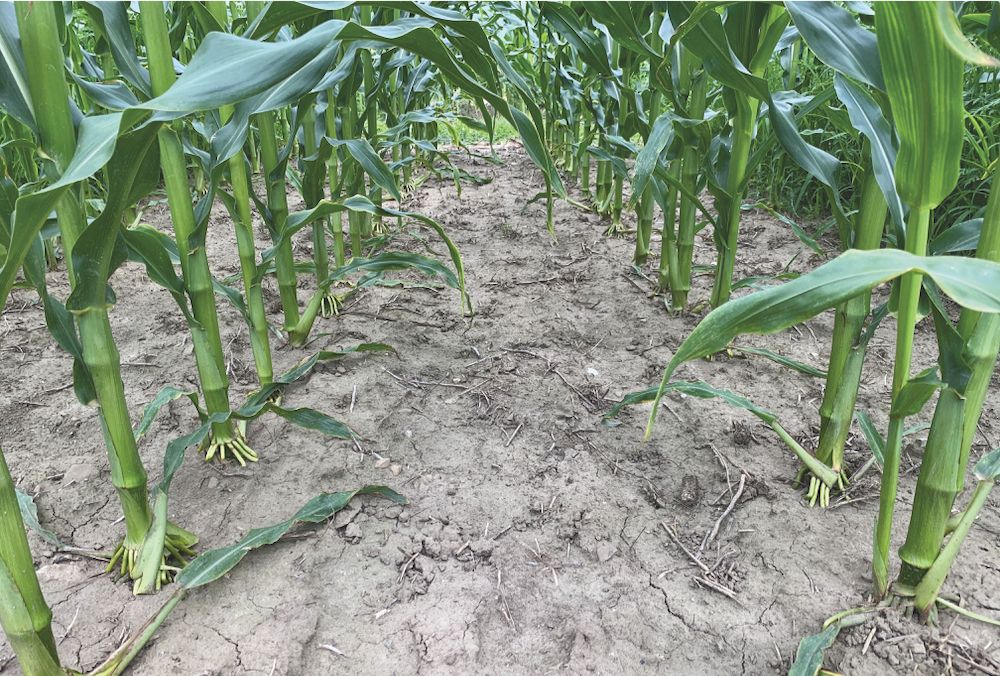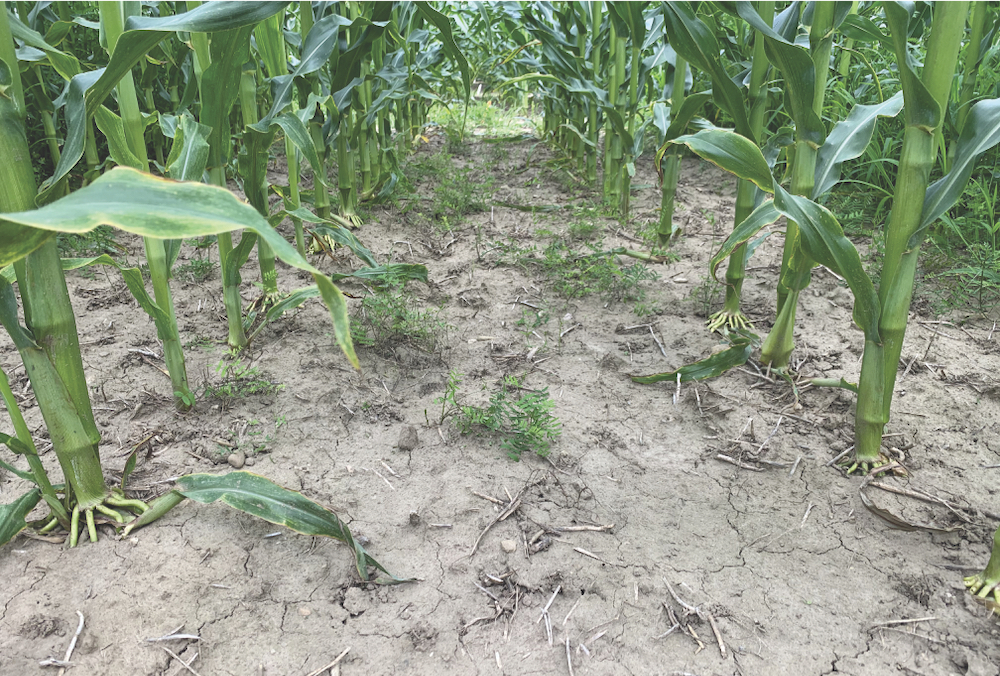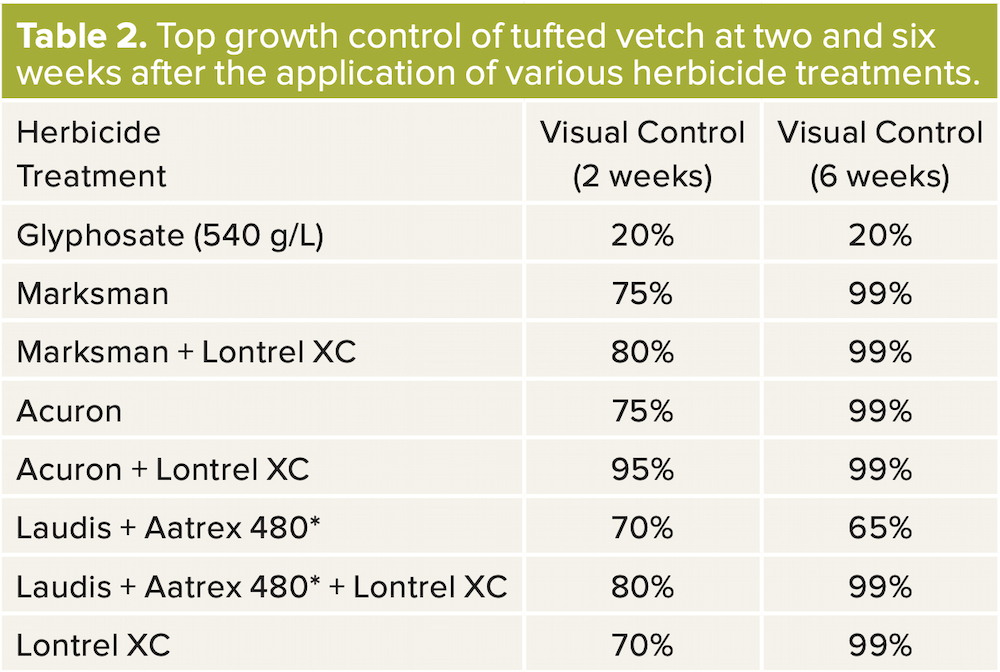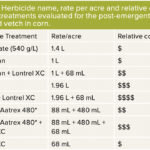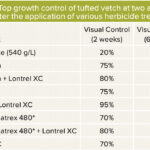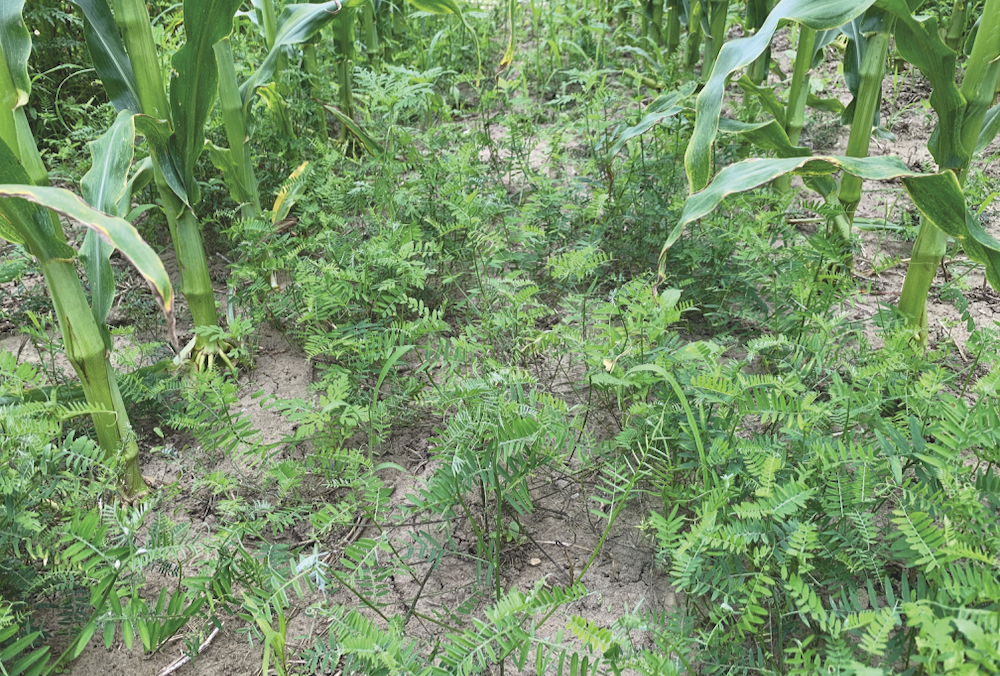
Glyphosate 2X vetch July 22
FIGURE 1: Tufted vetch growth at six weeks after an application of glyphosate.
Photo: Supplied
table1-PestPatrol-CGOct2021
TABLE 1: * Laudis + Aatrex must be applied with a methylated seed oil adjuvant and 28% UAN.
Photo: File
Acuron + Lontrel vetch July 22
FIGURE 2: Complete top growth control of tufted vetch was achieved at six weeks after application with Marksman, Acuron and Lontrel XC.
Photo: Supplied
Vetch Laudis + Aatrex on July 22
FIGURE 3: Top growth was suppressed at six weeks after a post emergent application of Laudis + Aatrex 480.
Photo: Supplied
table2-PestPatrol-CGOct2021
TABLE 2: * Laudis + Aatrex must be applied with a methylated seed oil adjuvant and 28% UAN.
Photo: File
Historically, post-emergent applications of Callisto + Aatrex 480, dicamba (e.g. Engenia/Xtendimax) or Distinct have provided the best top-growth control of tufted vetch (Vicia cracca) in corn. A trial was conducted in 2021 to evaluate tufted vetch control with two newer herbicides, Laudis + Aatrex and Acuron as well as Lontrel XC (clopyralid), a herbicide that is effective at controlling tufted vetch, but until recently, has been cost prohibitive to use in field corn (Table 1). All herbicides were applied at the five-leaf over stage of corn and to emerged tufted vetch (at 10 to 15 cm in height and/or diameter).
As expected, glyphosate (540 g/L) at 1.4 L/acre did not control tufted vetch (Figure 1). Marksman, Lontrel XC and Acuron all provide excellent top growth control of tufted vetch at six weeks after application (Figure 2 and Table 2). Laudis + Aatrex suppressed top growth of tufted vetch (Figure 3) but required a tank mix with Lontrel XC for complete top-growth control.
Have a question you want answered? Hashtag #PestPatrol on Twitter to @cowbrough or email Mike at [email protected].
Read Also

Sensing the soil: Root cell research finds ‘stress hormone’
Research into how root cells react to soil stressors could help plants better adapt to changes in their climate.

